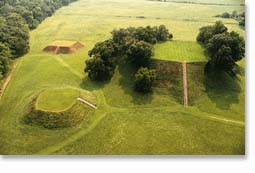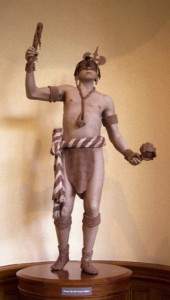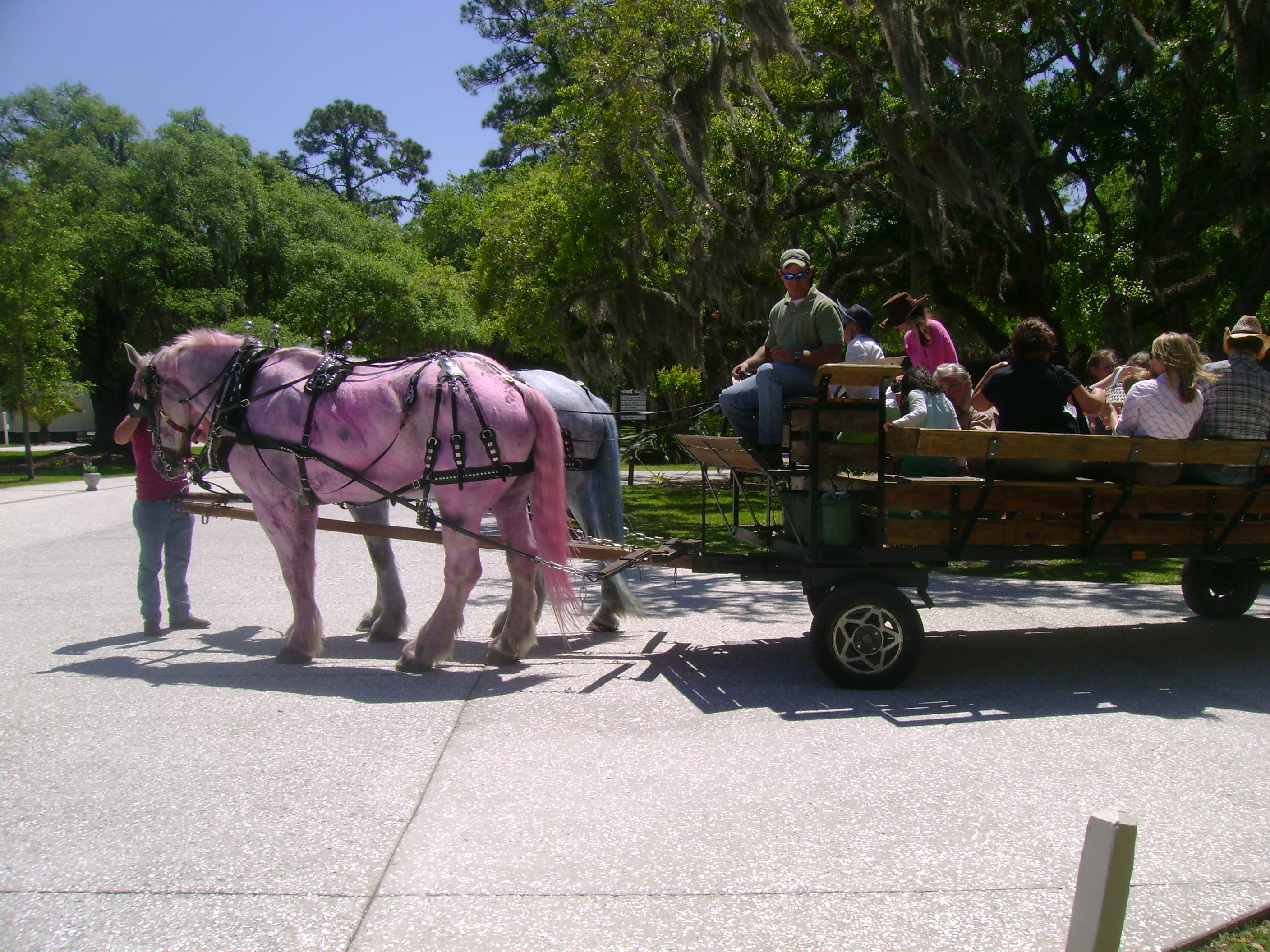Georgia’s Ancient Indian Cities
Etowah Mounds
| The temple mound at Etowah Mounds is one of the largest in North America and is located an hour north of Atlanta. |
As impressive as the Ocmulgee Mounds are there was still one last stop on my journey through Georgia’s prehistory: the Etowah Mounds complex. This site would be one of the last major Native American towns built before the arrival of Spanish explorers in the 1500’s.
Standing in the center of the site I could almost imagine how it appeared nearly 700 years ago at its height. The large temple mound that dominates the site would have been covered by red, yellow and white clays. A huge structure would have existed on top that would have served both as a council house and the residence of the chief-priest. From the artwork found in burials at this site we even know how this person would have dressed with hair and ear ornaments as well as shell beads around his ankles, knees, wrists, upper arms and around his neck.
This structure is over 67 feet tall and the earth for this structure was gathered partially from a defensive ditch that completely surrounds the site on three sides. This moat would have filled with water during the rainy season and with the Etowah River forming the fourth side, the site would have been easily defensible. A palisade wall made from massive timbers also surrounded the site forming an additional defensive layer.
 Two other large mounds at the site also featured structures on their summits. The funeral mound featured a funerary temple where the bodies of the dead were prepared for their internment. Two exquisite , large marble figures recovered from the mound during archaeological investigations were believed to have been housed in the funerary temple and represented important ancestors of the people who built this place. The craftsmanship of these effigy figures is superb and represents the finest examples of such sculptures anywhere in North America.
Two other large mounds at the site also featured structures on their summits. The funeral mound featured a funerary temple where the bodies of the dead were prepared for their internment. Two exquisite , large marble figures recovered from the mound during archaeological investigations were believed to have been housed in the funerary temple and represented important ancestors of the people who built this place. The craftsmanship of these effigy figures is superb and represents the finest examples of such sculptures anywhere in North America.
 This site also featured a central plaza capped with a thick layer of red Georgia clay. It is here that dances and games, especially ballgames, were held. Another intriguing feature of the site is a fish trap built in the river. Constructed from river rocks in the shape of a “V”, the Etowah inhabitants would force the fish into the wide part of the “V” and channel them down to the point of the “V” where others would be waiting with baskets to scoop them up. This was certainly a clever invention and a very effective means of catching large quantities of fish.
This site also featured a central plaza capped with a thick layer of red Georgia clay. It is here that dances and games, especially ballgames, were held. Another intriguing feature of the site is a fish trap built in the river. Constructed from river rocks in the shape of a “V”, the Etowah inhabitants would force the fish into the wide part of the “V” and channel them down to the point of the “V” where others would be waiting with baskets to scoop them up. This was certainly a clever invention and a very effective means of catching large quantities of fish.
Yet the Etowah site would eventually be abandoned as well. Archaeological excavations seem to point to a devastating attack against this site. The defensive wall appears to have been burned down and the marble effigy figures were found smashed and buried in a pit.
Georgia’s history does not begin with Oglethorpe and Savannah. The state has some of the most important archaeological sites in North America that attest to the nearly 12,000 years of human occupation. These sites are open to the public and make great weekend getaways. You don’t have to travel abroad to see the ruins of ancient civlizations. They exist right here in our own back yards.



